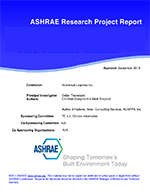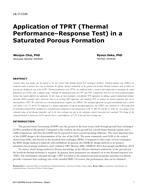The objective of this investigation was to evaluate the field performance of room air distribution in two rooms of a highperformance (low heating and cooling load) home. The two rooms had similar exterior exposures but had different supply register locations (high sidewall and floor). The impact of normal equipment cycling on the room air distribution performance was also investigated. The performance was evaluated based on room air temperature measurements and the requirements of ASHRAE Standard 55 (ASHRAE 1992). Measurements were made in a test home in Pittsburgh, Pennsylvania (cold climate), during both heating and cooling periods, after the air distribution system had been balanced. The room with the high sidewall register (bedroom) had approximately 75% of the design airflow based on load calculations, and the room with the floor register (dining room) had approximately 100% of the design airflow. A conclusion of the study, based on stratification and temperature cycling performance, is that high sidewall supply with a nonspreading register at an interior wall is effective for both heating and cooling operation in a cold climate. Another conclusion from this investigation is that floor supply with a spreading register at an exterior wall provides marginal heating operation in a high-performance home, as indicated by higher vertical temperature stratification and unacceptable temperature cycling. All of the conclusions from this investigation are limited to the conditions of the room air distribution methods studied and are worthy of further investigation. Additional research is recommended to investigate the effect of supply air temperature, register throw, alternate equipment control, and outlet location on room air distribution performance in residential applications.
Units: Dual
Citation: ASHRAE Transactions, vol. 111, pt. 1, Orlando 2005
Product Details
- Published:
- 2005
- Number of Pages:
- 12
- File Size:
- 1 file , 1.7 MB
- Product Code(s):
- D-25638


